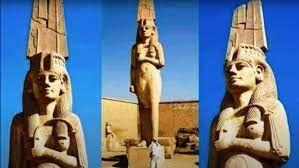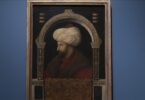Monitoring Desk
CAIRO: The new discovery of 5,000 year-old wine at an ancient Egyptian tomb has led archaeologists to a surprising conclusion.
They believe the burial site in Abydos, central Egypt, may actually be the final resting place of Egypt’s forgotten female ‘king’, Meret-Neith.
Her husband King Djet and son King Den were among the rulers of the First Dynasty of ancient Egypt, but recent excavations suggest she too may once have held such power, rather than just being Djet’s queen.
If true, it would make her the first female ruler of ancient Egypt — although some experts dispute the theory because they say ‘wives and daughters were not typically considered in terms of royal succession’, especially this early on.
Nevertheless, the discovery that her tomb was piled high with goods fit for a royal, including hundreds of sealed wine jars, suggests Meret-Neith was an influential figure with ‘unusually high levels of authority’.
The grape seed-filled jars – some of which were remarkably well-preserved and still in their original condition – are among the oldest evidence of wine ever uncovered.
They were discovered by a team of archaeologists led by Christiana Köhler from the University of Vienna.
‘The wine was no longer liquid, and we can’t tell if it was red or white,’ she said in a statement.
‘We found a lot of organic residue, grape seeds and crystals, possibly tartar, and all of this is currently being scientifically analysed.
‘It is probably the second oldest direct evidence for wine; the oldest also comes from Abydos.’
Köhler added: ‘The new excavations bring to light exciting new information about this unique woman and her time.’
Thanks to careful digging methods and various new archaeological technologies, experts were also able to establish that Meret-Neith’s tomb complex was built in several construction phases and over a relatively long period of time.
First uncovered by archaeologists in 1900, it was found to have been made with mud bricks, clay and wood, and includes the graves of 41 courtiers and servants.
This is not the only other evidence of great power, however.
Inscriptions discovered inside the tomb suggest that Meret-Neith held a number of important governmental positions around 3000 BC, including a role in the treasury.







